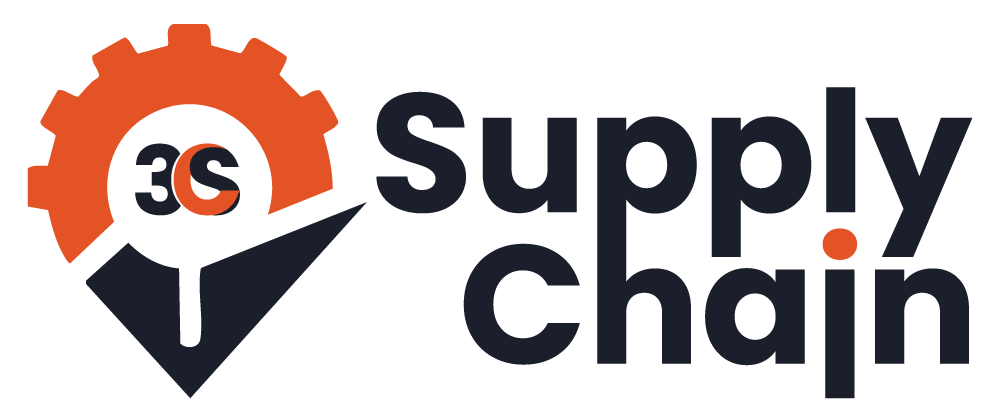What keeps a supply chain steady when everything else shifts? In the middle of daily operations weather disruptions, shipment delays, or supplier changes some businesses keep things moving without missing a beat. This isn’t luck. It’s the result of building stability into every link of the supply chain.
Over time, businesses that once reacted to disruptions are now planning for them adapting quickly, keeping shelves stocked, and orders on time. From sourcing to delivery, creating balance in your network is what turns uncertainty into control.
In this blog, we’ll explore practical ways to bring more stability into your operations no matter your size or industry. Each section offers real insight into building a reliable supply chain that works under pressure.
Table of Contents
What Does Supply Chain Stability Really Mean?
Supply chain stability is the consistent movement of goods, materials, and services despite internal or external disruptions. It’s the foundation that keeps operations dependable from sourcing raw materials to final delivery without frequent breakdowns or last-minute fixes.
At its core, stability means being prepared for what’s expected and resilient to what’s not. Whether it’s a missed shipment, a demand surge, or a vendor change, a stable supply chain adapts without slowing everything down. This doesn’t happen by chance it comes from strong coordination, reliable partners, and clearly defined processes that reduce uncertainty across the chain.
True stability ensures that production stays on schedule, warehouses stay organized, and orders reach their destination with minimal friction. It creates room for businesses to grow without constantly reacting to setbacks. Over time, this consistency becomes a competitive edge, allowing organizations to make smarter decisions and serve customers better, even when circumstances shift.
Why Is Supply Chain Stability Crucial in Today’s World?
- Improves Customer Retention
A stable supply chain ensures product availability, reducing missed opportunities and improving customer satisfaction in every transaction. - Reduces Operational Risk
Reliable supply routes and responsive systems help businesses handle unexpected events whether delays, shortages, or demand surges—with minimal disruption. - Prevents Last-Minute Fixes
Consistency in operations means fewer reactive measures. Teams can focus on planning and execution instead of emergency adjustments. - Strengthens Business Relationships
Stability encourages trust among suppliers, logistics partners, and stakeholders helping build long-term partnerships and smoother coordination. - Maintains Pricing and Margins
Predictable supply helps avoid costly rush orders or sudden sourcing changes, protecting profit margins and keeping pricing competitive. - Enables Confident Expansion
With a dependable supply backbone, businesses can scale operations, enter new markets, and meet increasing demand without overstretching.
Supply chain stability isn’t just a nice-to-have it’s a strategic necessity. In today’s unpredictable environment, consistency in operations offers a safeguard against chaos and a clear path toward sustainable growth.
How Can You Achieve Supply Chain Stabilization During Uncertain Times?
- Plan for Disruptions Before They Happen
Use proactive forecasting and contingency buffers to minimize the impact of external shocks like demand shifts or delayed inputs. - Maintain Safety Stock Strategically
Keeping reserve inventory for essential items can reduce downtime during unexpected shortages without tying up excessive capital. - Diversify Supplier Relationships
Building a network of reliable suppliers both local and global helps maintain continuity if one source becomes unavailable. - Enhance Communication Across the Chain
Clear, timely communication with logistics partners, warehouses, and vendors helps detect risks early and respond quickly. - Stay Flexible with Production and Delivery
Agile scheduling, alternative routes, and adaptable workflows ensure continued operations even during disruptions. - Use Visibility Tools for Real-Time Awareness
Monitoring inventory, transport, and supplier statuses in real-time enables fast, informed decisions when situations shift suddenly.
Supply chain stabilization isn’t about avoiding uncertainty it’s about being prepared for it. With the right structure, visibility, and adaptability, businesses can maintain control even when the environment changes without warning.
What Key Factors Enhance Supply Chain Stability?
- Reliable Supplier Network
Partnering with dependable suppliers helps reduce last-minute disruptions and ensures consistent product availability across the supply chain. - Intelligent Inventory Planning
Maintaining the right stock levels neither too high nor too low keeps operations lean and responsive without risking shortages. - Seamless Communication Channels
Regular updates between internal teams and external partners improve coordination and reduce the risk of misalignment. - Flexible Operational Strategies
The ability to shift production volumes, reroute shipments, or modify plans quickly is vital for maintaining stability under fluctuating conditions. - Well-Structured Logistics Systems
Consistent, well-planned transportation and distribution networks help avoid delays and reduce dependency on reactive measures. - Aligned Teams Across the Chain
When supply, procurement, planning, and logistics teams work in sync, decision-making becomes faster and more accurate, strengthening overall stability.
Supply chain stability depends on how well each link performs and connects. These foundational elements reduce uncertainty and create a stronger, more reliable flow from origin to delivery.
What Practical Insights Help Build Supply Chain Resilience?
- Back-Up Sourcing in Place
Maintaining secondary suppliers allows smoother operations when delays or disruptions occur unexpectedly. - Preemptive Planning
Preparing resources ahead of time whether raw materials or energy reserves helps keep production uninterrupted during uncertainties. - Flexible Vendor Relationships
Working with local or regional partners adds agility, making it easier to pivot when primary routes or sources are blocked. - Adaptive Production Scheduling
Adjusting production timelines in response to delays or early signs of shortage helps maintain delivery promises without last-minute stress. - Inventory Cushioning
Having essential items stocked slightly ahead of time reduces downtime and maintains service quality when external events strike. - Collaborative Risk Response
Teams that communicate openly and act quickly in response to early signals of disruption tend to recover faster and more efficiently.
Supply chain resilience is built on daily actions not dramatic moves. These habits make the chain steady, even when the environment is not.
What Challenges Are Currently Affecting Supply Chain Stability?
- Weather-Driven Disruptions
Sudden shifts in climate conditions can interrupt production, shipping, and storage without warning. - Inconsistent Supplier Fulfillment
Delays in sourcing raw materials or components often ripple across the chain, halting output and delivery schedules. - Unexpected Demand Surges
Fluctuating buying patterns can drain inventory faster than it can be restocked, stressing both planning and operations. - Transportation Breakdowns
Route closures, fuel shortages, and traffic bottlenecks slow down shipments and reduce reliability. - Internal Misalignment
Poor coordination between departments such as procurement, warehouse, and sales can lead to missed opportunities and stock imbalances. - Cross-Border Constraints
Trade policies, customs delays, and geopolitical tensions can hold up goods, especially in globally linked supply chains.
Each of these challenges threatens the steady flow businesses depend on. Addressing them early helps maintain long-term stability.
Where Is Supply Chain Stability Headed in the Future?
Looking ahead, supply chain stability is shifting from a reactive approach to a more prepared, connected, and predictive system. Businesses are gradually moving away from isolated fixes and toward proactive coordination across every stage of the chain.
Instead of relying on guesswork, companies are adopting strategies that help manage supply risks, strengthen local partnerships, and streamline inventory buffers. By aligning logistics, communication, and operations, they’re building systems that can withstand disruptions and recover faster when needed.
This isn’t just about avoiding issues it’s about creating the confidence to plan, scale, and serve without interruption. The future of supply chains lies in steady flow, strong connections, and responsive decision-making. That stability is no longer a luxury; it’s becoming the baseline for staying competitive.
Conclusion
Supply chain stability isn’t just a strategy it’s the foundation that keeps everything moving when conditions shift. From daily operations to long-term goals, it creates a sense of control in a space often marked by unpredictability.
What truly defines a resilient supply chain is its ability to maintain momentum not just during smooth stretches, but especially when disruptions appear. That balance between planning, flexibility, and communication is what transforms pressure into progress.
As challenges evolve, stability becomes more than a goal it’s a mindset. And moving toward it doesn’t always require a complete overhaul. Sometimes, it starts with one clear step forward.

